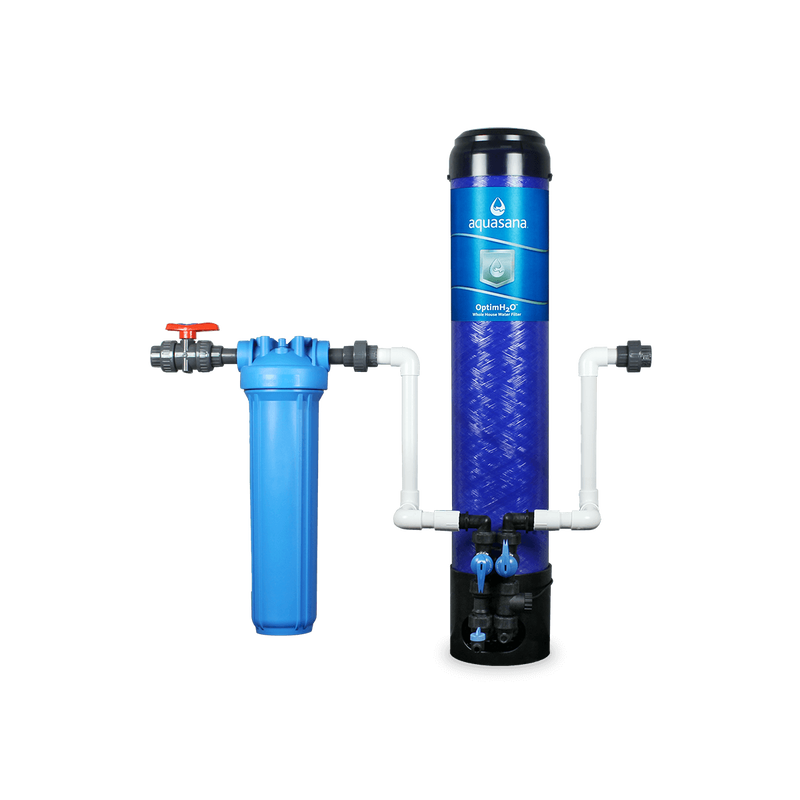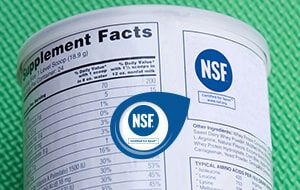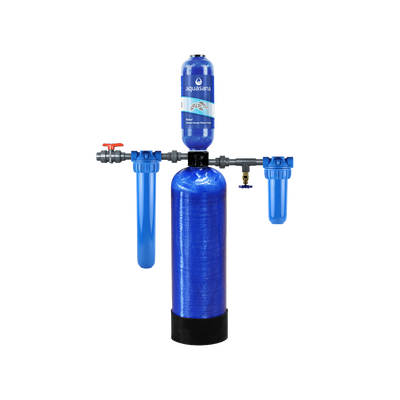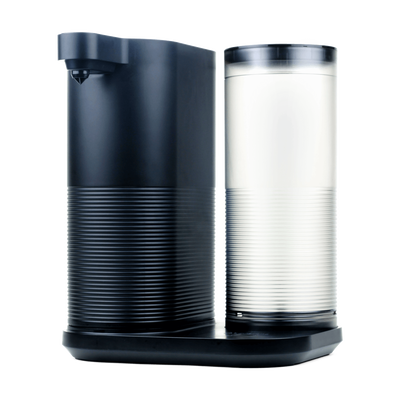Who is WQA?
The WQA was founded in 1974, and “serves as an educator of water treatment professionals, a certifier of water treatment products, a public information resource and the voice of the water quality improvement industry.” They offer testing and certification services for water treatment products to various standards including NSF’s, and their assessment includes lab tests, a literature review, and materials assessment.
Who is IAPMO?
Founded in 1926, the IAPMO Group (or, the International Association of Plumbing and Mechanical Officials) is an independent organization that develops and tests to certain standards, to meet needs both nationally and internationally.
They certify products to externally-mandated standards, like NSF's, and also set some of their own standard for plumbing code requirements, for example.
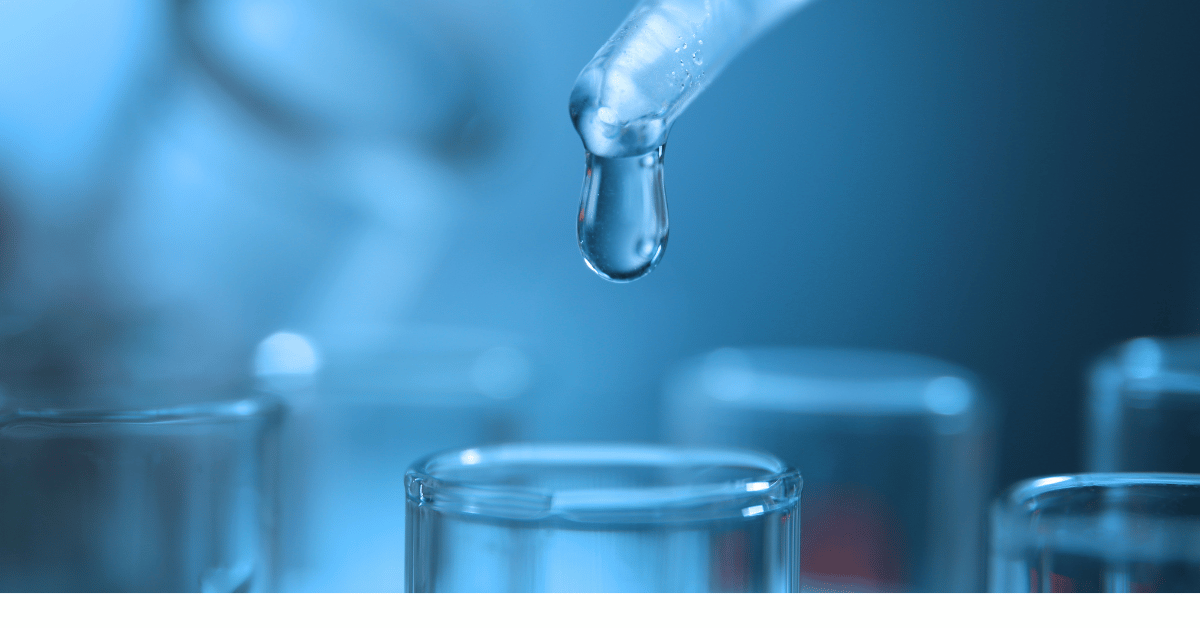
How to know if a water filter is certified
Water filters can claim to remove or reduce contaminants, but certification from an independent group can give you assurance that the product really does what it says it will. Luckily, you can easily confirm if a water filter is certified by looking for a seal on the product’s label or packaging. The seal may be from the NSF, or another group like IAPMO or the WQA with details about the standards they’ve been tested to. Here’s what the seals look like for each of these groups:
For all NSF certified products, look for the following seal or visit their database.
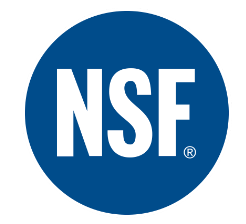
For all IAPMO certified products, look for the following seal or visit their database.
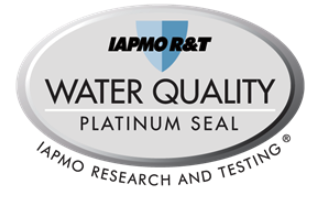
For all WQA certified products, look for the following seal or visit their database.
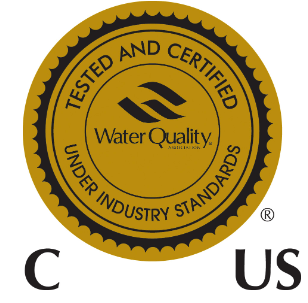
To see if a water filter is certified, look for these seals and check which standards they’re certified to. Some water filters may be certified to NSF Standards by other groups, or they can be certified to the testing group’s own standards. Typically, you can find the seal on the bottom of the water filter system on the product sticker. This product sticker will also include the flow rate, manufacturing information, and any electricity specifications. If you’re unable to find the seal directly on the system, check the owner’s manual in the data specifications section and/or the product's Performance Data Sheet.
How NSF Certifications are obtained for water filtration systems
1. Application
If a company wants to become certified by NSF or to any of the other third-party testing entities, they first must submit an application for the filtration system. This application must include important information about the product materials such as materials used to make it, where it is manufactured, and most importantly, what claims the company plans on making regarding contaminant reduction.
2. Testing and inspection
Next, the experts at the testing facility evaluate the filtration system for structural integrity, safety, and filtration efficacy. Through this rigorous testing, they can determine if your filtration system does what it says it’s going to do. This testing includes water pressure tests, contaminant testing, and filter replacement.
During this time, the certifying body must also review any literature that includes their seal. This can be anything from owner’s manuals, to website text, to system labels. All certifying bodies have specific language you can and cannot use when referencing their certification.
3. Certification approval
If the system passes all testing, NSF, IAPMO, or WQA will send the company a certification contract. Once signed and returned, the seal can be used. All certifying bodies also add the filtration system to their website and include the standards the filter met.
While certifications aren’t required to sell a water filtration system, at Aquasana we believe it’s incredibly important. All of our water filtration systems are third-party or independently tested to meet NSF/ANSI Standards and the vast majority are certified. The cost of getting a filtration system tested and certified by a third party costs upwards of $100,000 per product, so while this is a major cost for our company, we believe that providing peace of mind to our customers that each of our product’s claims are rigorously tested is worth the investment.
Aquasana and certifications
While many companies may claim to reduce contaminants, Aquasana tests and certifies products through NSF, WQA, and IAPMO to various NSF Standards. Here’s an overview of our drinking water filters that are certified to NSF Standards.
Certified under sink and countertop filters
We offer several under sink and countertop systems that are WQA certified to various NSF/ANSI Standards. Our SmartFlow® Reverse Osmosis system is WQA tested and certified to NSF/ANSI standards 42, 53, 58, 401, and CSA 483.1.The Claryum® 3-Stage Max Flow, 3-Stage, 2-Stage Under Sink Filter, and Clean Water Machine are also WQA tested and certified to NSF Standards 42, 53, and 401. Lastly, our Claryum® Direct Connect is IAPMO certified to NSF Standards 42, 53, and 401.

Certified whole house filters
We offer two whole house systems that are WQA certified to NSF/ANSI Standards 42 and 61. Both the Rhino® and Rhino® Max Flow feature a 1,000,000 gallon capacity (or up to 10 years) that reduces 97% of chlorine from every faucet in your home, though the Max Flow offers 2x the flow rate (14 GPM).
If you live in an area where Chloramines are an issue in your water, our Rhino® Chloramines and Rhino® Chloramines Max Flow are tested and certified to NSF Standard 42 to reduce 83% of chloramines and 97% of chlorine.
And finally, our OptimH2O® is IAPMO tested and certified to tackle lead, cysts, PFOA/PFOS, chlorine and chloramines, making it our most powerful whole house system available.
Aquasana will continue to lead the industry by engineering and earning our product certifications that meet NSF’s rigorous standards. We will be on guard against whatever pollutants and contaminants are threatening our water, and continue to be the best solution to aging water infrastructure, so you can experience the cleanest, healthiest water, and peace of mind for your whole family.
WHOLE HOUSE WATER FILTER
OptimH2O®
Tested and certified to reduce lead, cysts, and PFOA/PFOS, plus tackles chlorine and chloramines.
